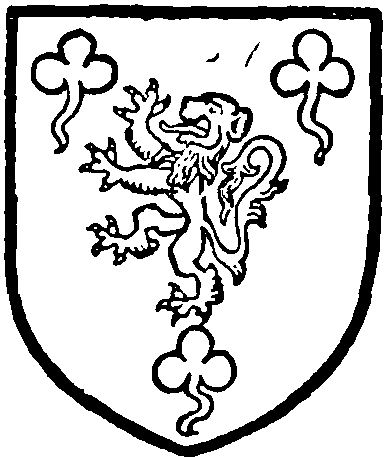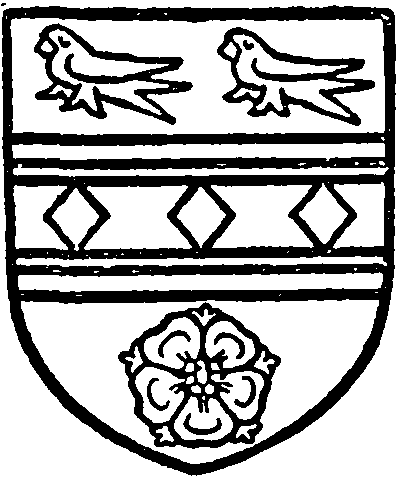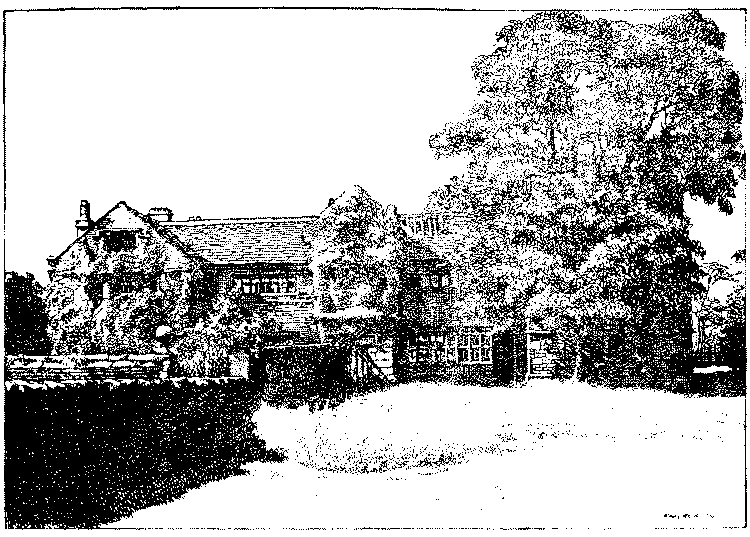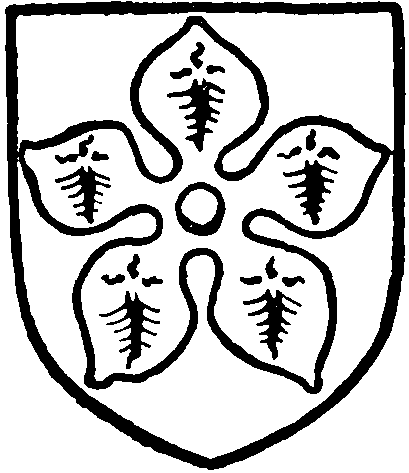A History of the County of Lancaster: Volume 6. Originally published by Victoria County History, London, 1911.
This free content was digitised by double rekeying. All rights reserved.
'Townships: Livesey', in A History of the County of Lancaster: Volume 6, ed. William Farrer, J Brownbill (London, 1911), British History Online https://www.british-history.ac.uk/vch/lancs/vol6/pp284-289 [accessed 2 May 2025].
'Townships: Livesey', in A History of the County of Lancaster: Volume 6. Edited by William Farrer, J Brownbill (London, 1911), British History Online, accessed May 2, 2025, https://www.british-history.ac.uk/vch/lancs/vol6/pp284-289.
"Townships: Livesey". A History of the County of Lancaster: Volume 6. Ed. William Farrer, J Brownbill (London, 1911), British History Online. Web. 2 May 2025. https://www.british-history.ac.uk/vch/lancs/vol6/pp284-289.
In this section
LIVESEY
Liveshay, 1246; Lyvesay, xiii-xvii cent.; Levesay, xiv-xv cent.
Down to the end of the 17th century Livesey with Tockholes was rated as one township for fiscal and administrative purposes. The township lies to the west of Lower Darwen, the boundary passing over Bank o' th' Hey, at an elevation exceeding 750 ft. above the ordnance datum, and to the east of Bunker's Hill (708 ft.). From these heights the ground slopes downward to the River Darwen on the north and to the River Roddlesworth on the west with an elevation of under 280 ft. at the confluence of these streams. On the south the boundary descends from the northwestern slope of Winter Hill in Tockholes to the River Roddlesworth, below Stanworth Edge in the hundred of Leyland. In the northern part of the township and on the high ground the subsoil consists of the Coal Measures, on the intervening hill slopes of the Millstone Grit. The soil is clayey and the land consists entirely of meadow and pasture land; there is a considerable area of woodland on the slopes of Bunker's Hill and in the lower ground of the Rivers Darwen and Roddlesworth. (fn. 1) The area of the township is 2,036 acres. In 1868 the suburban part of the township was included in the parliamentary borough of Blackburn. By the Blackburn Corporation Act, 1892, part of the township containing 462 acres was included in the borough and civil parish of Blackburn. The population of the reduced township in 1901 was 3,135 persons. (fn. 2) a By the Blackburn Corporation Act, 1901, a further portion of the township with 289 separate occupiers has been added to the civil parish of Blackburn. (fn. 3)
The Liverpool, Blackburn and Accrington line of the Lancashire and Yorkshire Railway Company traverses the township with stations at Mill Hill and Cherry Tree. Near Livesey Hall the Cherry Tree and Chorley joint line of this and of the London and North Western Railway Company turns southward with a station at Feniscowles. The Leeds and Liverpool Canal also passes through the township, crossing the Rivers Darwen and Roddlesworth by aqueducts.
The main road from Preston to Blackburn passes through the north-western part of the township, which it enters over Moulden Water bridge, and passing through Feniscowles and Cherry Tree issues over Feniscliffe Bridge. From Feniscowles an inferior road turns south-eastward with a branch passing through Waterloo and Ewood into the Blackburn and Darwen road, whilst another branch leads over the hills to Lower Darwen.
Cotton-spinning and weaving form the staple industry, the factories being situated near the canal and railway at Mill Hill and Cherry Tree and near Ewood. There are also two paper-mills and brick, tile and drain-pipe manufactories. Coal was formerly got on Bunker's Hill, where there are traces of many adits to old workings, and down to 1850 there were large calico-printing works at Stakes Hall. (fn. 4)
Manor
In 1242 Ralph de Mitton was returned in the inquest of the Gascon scutage as holding LIVESEY of the honor of Clitheroe as part of the dower assigned to Margaret Countess of Lincoln. (fn. 5) Nothing has been found to show how the tenure of the manor by this family originated. Their mesne tenure of the manor passed to the Hoghtons, and in 1355 upon the collection of the aid granted nine years before Adam de Hoghton, kt., was returned as holding Livesey of the Duke of Lancaster. (fn. 6)
'Livyesay' was included among the manors held of Edmund de Lacy at his death in 1258 by the service of thegnage and a rent of 29s. per annum. (fn. 7)
At least as early as the time of John the family of Bury were lords of the manor, Adam de Bury being in possession in the time of Geoffrey the younger, Dean of Whalley. From Adam it descended to his younger son William, who sometimes bore the local name. In 1227 as William de Bury he called upon his elder brother Adam de Bury to warrant his title to two plough-lands in Livesey, in which Isabel the relict of Roger de Bury was claiming dower. (fn. 8) The same year he as William de Livesey made an agreement with Adam de Billington for a partition of lands adjoining the water of 'Derewent.' (fn. 9) In 1246 he was one of the jurors of this hundred at a special county court held at Lancaster, (fn. 10) and about the same time, describing himself as William son of Adam de Bury, he gave 7 oxgangs of land here to his son Henry with the part of Whithalgh which belonged to his demesne land. (fn. 11) This Henry gave a small parcel of land here to Stanlaw Abbey and William his son afterwards remitted the rent of it. (fn. 12) In 1311 Henry de Bury, the mediate lord, held the manor in thegnage of the Earl of Lincoln for 29s. rent and suit at the three weeks court at Clitheroe, and in 1323 Henry de Livesey paid a fine for respite of his suit at the same court in respect of the manor. (fn. 13) The relationship of Henry to William de Livesey is uncertain. In 1336 he settled the manor upon his son Henry at the latter's marriage to Cecily daughter of Thomas de Sutton. (fn. 14)
John de Livesey, the next in succession, vested the manor in trustees in 1367 and died in or before 1389, when John Duke of Lancaster granted the wardship and marriage of John son and heir of John de Livesey to Richard de Hoghton, kt., and Richard Whalley. (fn. 15) John Livesey was returned in 1431 as holding the manor for 29s. rent and again in 1445–6 as holding it by the sixteenth part of a knight's fee. (fn. 16) From 1455 to 1483 Geoffrey Livesey was apparently in possession. (fn. 17) There is uncertainty as to his relationship to his successor John Livesey, who died before 20 July 1504, when Giles son and heir of John had livery of the manor. (fn. 18) Giles married Alice daughter of John Talbot of Salesbury by dispensation issued in 1494, they being related in the third and fourth degrees. (fn. 19) He died in 1521 holding the manor in chief by the eighth part of a knight's fee and 29s. rent. James his son, then aged nineteen years, had been married during his father's lifetime to Alice daughter of James Rushton of Pouthalgh. (fn. 20) In 1544 James Livesey obtained the consent of the freeholders in Livesey to inclose 50 acres of waste adjoining his own lands. (fn. 21) He died in 1548, having five years before contracted for the marriage of his son Richard to Ellen daughter of Christopher Lister of Middop, near Gisburn. (fn. 22)

Livesey of Livesey. Argent a lion rampant gules between three trefoils vert.
In 1563 Richard Livesey purchased a messuage called 'Orlage' from Thomas Hoghton of Lea, esq., (fn. 23) and in 1588 contributed to the national fund for defence against the Spanish Armada, and died at Samlesbury early in 1591. His eldest son John had been contracted in marriage to Jennet daughter and co-heir of John and Margaret Isherwood of Pleasington in 1575, had issue James, John and Mary, who married Thomas Parker of Loveley, and died in his father's lifetime. James Livesey grandson of Richard was therefore heir to the manor at his grandfather's death in 1591, being then aged thirteen years. (fn. 24) He married Alice daughter of James Bradshaw of Darcy Lever, entered his pedigree at St. George's visitation in 1613 and died without issue in 1619. Under the terms of a settlement made in 1618 the manor and estates passed to Ralph younger son of John Livesey of South Hykeham, Lincs., then aged eleven years. (fn. 25)
Ralph Livesey married Mary daughter of William Radcliffe of Manchester, in accordance with an unusual provision in the settlement which limited the succession of the estates to him conditionally upon his contracting this marriage; but the issue, a son James, born in 1628, only survived until 1632. Ralph married, secondly, Anne daughter of Thomas Clayton of Fulwood, by whom he had numerous issue, the third, but eldest surviving, son Ralph being aged seven in 1664, when the father entered his pedigree in Dugdale's visitation. (fn. 26) He enlarged the hall of Livesey in 1666, and died at the age of eighty-four in 1695, having been one of the governors of Blackburn Grammar School since his appointment in December 1630. Ralph, his only surviving son, succeeded, and died in 1725, having had by Anne his wife, among other issue, Porter Livesey, who held the estate until his death in 1747, and, never having married, was succeeded by Ralph son of his brother William. Ralph Livesey, at his death in 1766, left issue by his wife Mary daughter of Ralph Consett of Brawith Hall, co. York (who assumed the name of Bell in 1735), an only daughter Mary, who died unmarried at the age of eighteen, in the year 1774. (fn. 27) Elizabeth sister of Ralph Livesey married Daniel Wilson of Lancaster, esq., of the family of Wilson of Dallam Tower, co. Westmorland, and enjoyed a life interest in the estates until her death in 1801. (fn. 28)
In 1760 Ralph Livesey had demised his estates to trustees for the benefit of his brother-in-law Ralph Bell of Thirsk and his issue. Robert second son of Ralph Bell was born in 1768, and upon succeeding to the Livesey estates assumed the additional surname and arms of Livesey. (fn. 29) About the year 1806 he sold the manor with various estates in Livesey, Tockholes, Pleasington and Balderston to Henry Feilden of Witton and his brother William Feilden of Feniscowles, who was created a baronet in 1846. Captain James Hawley Gilbert Feilden, late of the King's Royal Rifle Corps, great-grandson of Henry Feilden, is now lord of the manor, having in 1902 succeeded his brother, Major Cecil William Montague Feilden, D.S.O., who was killed in action at Heidelberg.

Feilden. Argent on a fesse cotised azure between two martlets in chief sable and in base a rose gules three lozenges or.
LIVESEY HALL stands in a low situation on the north side of the township, a little removed from the old high road from Blackburn to Preston, about 2 miles from the former town. The railway now passes close to it on the north side, but the house, which is a two-story stone building, with attics in the gables, faces the south. It appears to have been erected in the first decade of the 17th century, and altered or enlarged at two subsequent periods before the century was ended. The plan is E-shaped, following the usual type of central hall with projecting end wings, and has a projecting porch in the middle going up the full height, and breaking into the roof in a gabled attic story. The front therefore, which is 96 ft. long, presents a more or less regular design of three gables—a wide one at each end and a narrow one midway between. The roofs are covered with stone slates, and the windows are all the original mullioned ones with labels, those to the hall alone being divided by transoms. The porch has a plain square-headed door with hood mould, above which is a square panel, now very much worn, with the arms of Livesey. At the east end of the main front wall of the middle wing is a panel with the inscription 'deo soli gloria ilal 1608,' the initials being those of James Livesey and Alice (born Bradshaw) his wife, and the date probably giving the year of the erection of the building. Another square panel with moulded border, over the first floor window of the east wing, is inscribed 'virtvs est vera nobiliatas rlal 1666,' apparently indicating that the wing is the work of Ralph and Anne Livesey at the date named; but it may refer only to a refacing or restoration of the front. In the opposite wing, facing west, is a doorway with moulded jambs and shaped head, dated 1689, and the initials RPA L which probably stand for Ralph and Anne Livesey and Porter Livesey, their son. The house, however, probably belongs substantially to the first date, the later inscriptions most likely referring to repairs or additions.
A few years after the sale of the estate to the Feildens, in the early part of the 19th century, the house was divided into two, (fn. 30) and subsequently the garden was divided down its centre by a wall, and the boundary wall of the eastern half was destroyed. Originally a formal garden stood in front of the whole of the house, within inclosing stone walls, and entered by a centrally placed gateway, with stone piers surmounted by balls. (fn. 31) The west end of the house was restored in 1822, (fn. 32) and has since been used as a dwelling; but the eastern end, including the great hall and the whole of the east wing, has since been allowed to go to decay, and is now in a very dilapidated condition. (fn. 33)
The great hall, which is 29 ft. 6 in. long, including the screens, and 20 ft. 6 in. wide, is lit on the south by a mullioned and transomed window of ten lights, and had a large fireplace on the north, with a window on one side. The fireplace and chimney, however, have been destroyed, and the wall is now open on the north side. The floors of the hall and the rooms over are gone, the middle wing being practically gutted, but the line of the hall ceiling, which was 11 ft. in height, is marked by the plaster frieze which still remains on the walls. The turned balusters and newels of an old Jacobean staircase are lying about. (fn. 34) The entrance is from the porch in the south-west corner, and there is a door on the north-west, opposite, indicating that the plan preserved the old arrangement of screen (fn. 35) and passage. The windows to the rooms over the hall are now bricked up, and other windows at the east end have been similarly treated. The back of the house is in a very dilapidated condition, and the shafts of the large projecting chimney at the east end have disappeared. The front windows of the inhabited west wing are all of seven lights, and the gable preserves its original ball terminations. The interior, however, is of little interest, having been almost entirely modernized.

Livesey Hall from the South
The hamlet of EWOOD was granted out of the demesne in the time of Geoffrey the younger, Dean of Whalley, by Adam de Bury to Adam son of Philip the priest, namely 'all the land of Hewode between the water of Derewint and Elfeletische and Fernihurst.' (fn. 36) Adam assumed the name of Ewood and was ancestor of a long line of possessors. Richard de Ewood, son of Adam, was one of the many Blackburnshire people who were convicted at Lancaster in 1246 of harbouring the sons of Roger, parson of Blackburn, who had burned down the grange belonging to Stanlaw Abbey at Staining in Amounderness. (fn. 37) Adam occurs in 1292 and was the father of Adam de Ewood living in 1324 and one of the largest contributors to the subsidy of 1332. (fn. 38) Adam, probably son of the last-named, held lands and tenements in Nether Darwen in 1362 of the heirs of Thomas de Arderne, kt., by a rent of 13s. 4d. (fn. 39) In 1404 the estate was settled upon Margaret Ewood, widow, for life with remainder to Catherine the wife of Edmund Ainsworth of Pleasington. (fn. 40)
At the beginning of the next century it was in the possession of William Astley, said to have been descended from the house of Astley of Patshull, co. Stafford. He had issue by Jennet his wife a son George, who paid his relief to Giles Livesey in 1513 in respect of this estate. George Astley married Jane daughter of James Stanley, kt., and was living in 1569 when a settlement of Ewood was made upon his son Thomas, who had recently married Mary daughter of Richard Livesey of Fernihurst. (fn. 41) Thomas Astley entered his pedigree at St. George's visitation in 1613 and died in 1617. (fn. 42) Thomas his son survived his father six years and died seised of the 'hall of Stakes' in Livesey, leaving Thomas his son, aged nine years. (fn. 43) The last-named Thomas was father of Thomas Astley, who entered his pedigree in 1664 (fn. 44) and died in 1667. His great-grandson the Rev. George Astley, who was the last representative in the main line, sold the estate before his death in 1777. It passed to the firm of Turner, calico printers, who demolished the hall and erected print works upon the site. The locality bears the name of 'Stakes Hall.' In 1843 a portion of the estate was purchased by Mr. Joseph Eccles and has since been largely built upon. (fn. 45)

Astley. Azure a cinquefoil ermine.
A messuage and tenement named Ewood was the property during the 16th and 17th centuries of the family of Holden, who held it of the Astleys of Stakes in socage. (fn. 46)
WHITHALGH (Quithalwe, Quithalc, 1300; Withalgh, 1339) in Livesey was given in the time of Edward I by William son of Henry de Livesey to Richard his brother subject to a yearly rent of 2s. Other land here was also given by Adam de Livesey in the time of Edward II to his son William Pakoc, who resigned it to William son of Richard de Livesey in the next reign. (fn. 47) This William adopted Whithalgh as surname and was ancestor of Uriel son of Henry Whithalgh, who released lands in Livesey called 'Streket croft' and 'Pighel' in 1413 to John Livesey. (fn. 48) James Whithalgh probably held the estate in 1524 and was father of Richard, whose eldest son James died in 1568 seised of a capital messuage in Livesey held of Richard Livesey in socage by a yearly rent of 2s. 2d., and other lands in Mellor, Cuerden and Oswaldtwistle. His brother Lawrence's son, John Whithalgh, aged twenty, was heir to the estate, (fn. 49) but died shortly after and appears to have been succeeded by his brother Richard, who passed the estates by fine in 1581 to trustees for settlement upon himself and Joan his wife. (fn. 50) His son James Whithalgh succeeded in 1601 and in 1625 conveyed the messuage and tenement known as Whithalgh House to trustees for the benefit of the grammar school at Blackburn. (fn. 51) Richard Whitehalgh still owned a house and property here in 1666.
Feniscowles (Fennyshales, Fenniscoles, 1307–9; Fanyscowles, Feniscoales, xvii cent.) gave name to a family of whom Adam de Fenniscoles was a surety for Henry son of Robert de Livesey, non-suited at Lancaster in 1309. (fn. 52) In the 16th and 17th centuries it was the property of the Livesey family. (fn. 53) Broadhalgh (Bradhaleigh, 1309) was the property of the same family in the 17th century. (fn. 54)
Feniscliffe (Faniscliffe, 1522) was exchanged by John son and heir of William Woodcock of Waltonle-Dale with John son and heir of John Garstang of Stanworth in 1522 for tenements in Walton-leDale, (fn. 55) and was conveyed to Robert Harwood of Livesey in 1564 by James Garstang, gent. Robert Harwood of Feniscliffe occurs in the time of James I. (fn. 56)
In 1666 the hearths which paid duty numbered eighty-three, Ralph Livesey with five and Richard Whitehalgh with four being the chief contributors. (fn. 57) The second largest contributor to the land tax in 1788 was Mr. Edward Haworth, the largest being Mrs. Wilson.
The church of Immanuel at Feniscowles, commenced in 1835 and consecrated the year following, contains a monument to Sir William Feilden, bart., who gave the site and the stone for the building and partially endowed the living. A parish was assigned to the church in 1842. (fn. 58) The registers commence in 1837. The living is a vicarage in the gift of the vicar of Blackburn.
St. Andrew's Church at Moorgate was erected in 1877, and a parish formed in the same year, (fn. 59) in which also the registers commence. The living is a perpetual curacy in the gift of five trustees.
The church of St. Francis at Feniscliffe was erected in 1890 and a parish assigned to it in 1893; the living is a vicarage in the gift of the Bishop of Manchester.
The conventional district of St. Bartholomew's, Ewood, has been formed, but no church has been built; the Bishop of Manchester collates.
The Independent connexion first held services about 1844 in a farm-house at Stakes Hall, a small chapel being erected three years later by Mr. Joseph Eccles on his estate at Mill Hill. In 1860 the Mill Hill Congregational Church was opened; the former chapel, devoted to the purposes of a day and Sunday school, was enlarged in 1885 and 1903. (fn. 60) Another church was opened at Cherry Tree in 1887. (fn. 61)
The chapel of the United Methodist Free Church at Waterfall was erected in 1861 and has since been enlarged. (fn. 62) There is a Primitive Methodist chapel in Bentham Street.
The Roman Catholic church of St. Peter-inChains, Mill Hill, was founded in 1889.